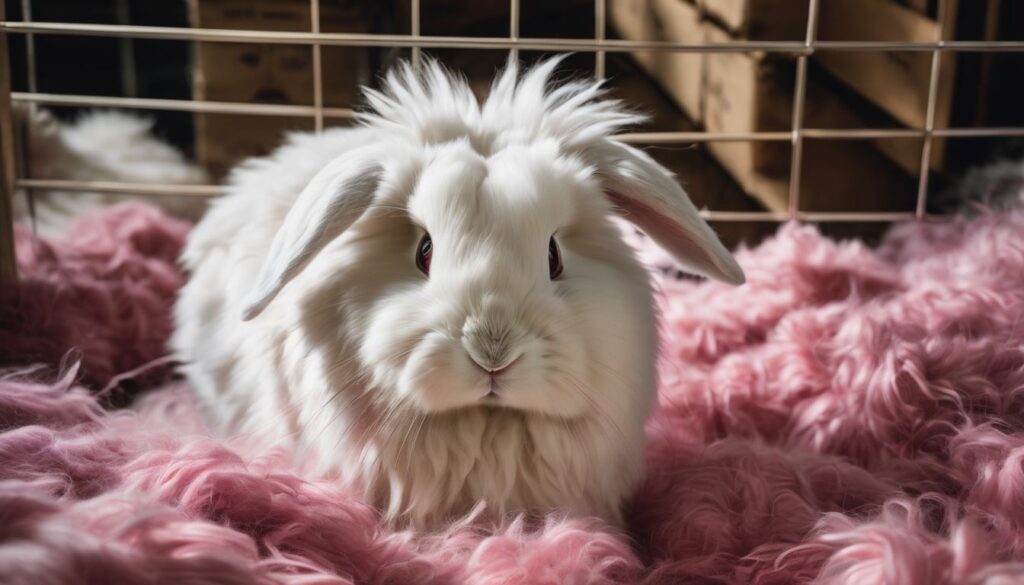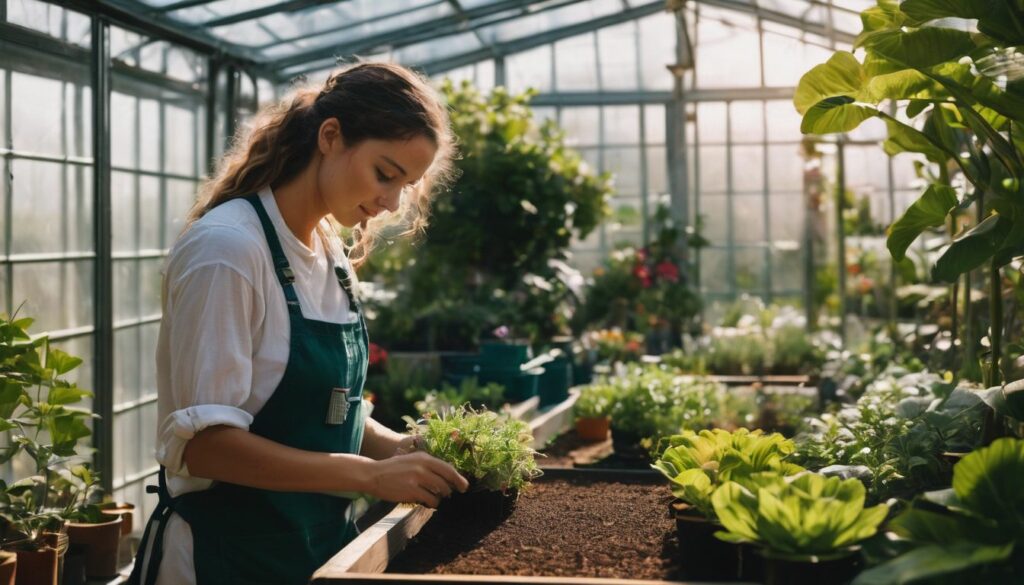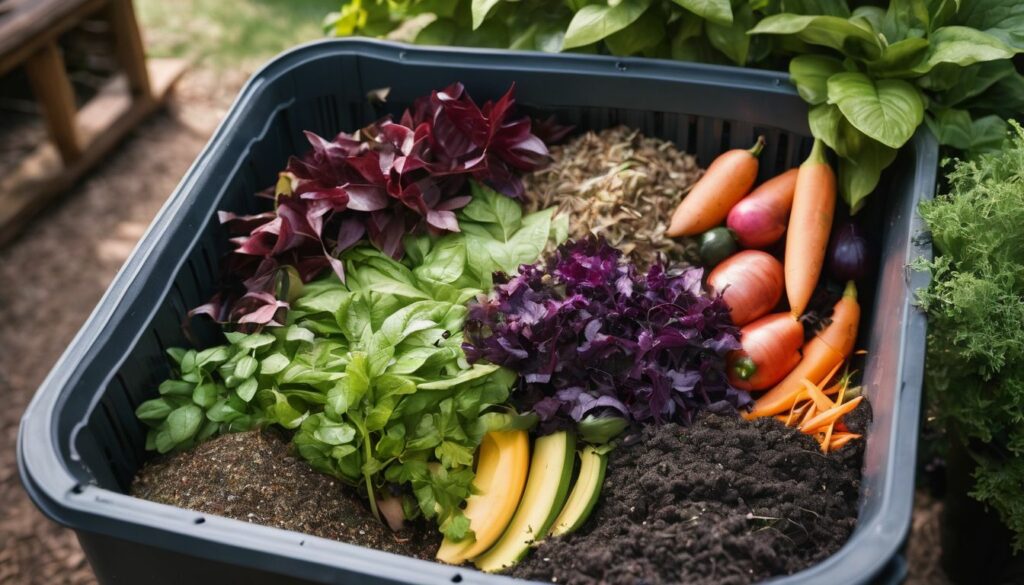Sweaters and mittens woven from the deluxe angora rabbit wool can seem oh-so enticing. But behind those cozy clothing items lies a harsh reality that’s often overlooked: the severe mistreatment these sweet, innocent creatures are subjected to just so we can sport this plush fiber.
On my personal journey towards cruelty-free fashion alternatives, I stumbled upon some unsettling truths buried deep within sectors of angora wool production – a realm artfully concealing its sinister side beneath the soft balls of fluffiness we adore so much.
In this blog post, I’m going to lift that veil of secrecy and shed light on these hidden realities facing our furry friends. Together we’ll explore how each one of us has the power to make humane fashion decisions with compassion at their core.
Are you ready for your wake-up call?.
Key Takeaways
- Angora rabbit wool is a luxurious fiber that comes from the downy coat of Angora rabbits.
- The production of angora rabbit fur involves cruelty and suffering, with rabbits being forcefully restrained and their fur ripped out while they scream in pain.
- Sustainable alternatives to angora wool, such as plant – based fibers or recycled materials, provide compassionate choices for fashion consumers concerned about animal welfare and the environment.
- Animal – friendly fashion is crucial for building a better future by advocating for ethical practices and ending the exploitation of animals in the fashion industry.
What is Angora Rabbit Wool?
Angora rabbit wool is a luxurious and highly coveted fiber that comes from the downy coat of Angora rabbits.
Production methods
Farmers use two ways to get wool from angora rabbits. The first way is plucking. They pull out the fur when it sheds naturally. It does not hurt the rabbit if done right. But, many farmers do it rough and cause pain to the animals.
The second way is shearing or cutting off the fur with sharp tools like scissors or shears similar to how sheep’s wool is cut off during harvesting time (“sheep-shearing”). Sometimes, rabbits get hurt during this process too.
Animal cruelty in fur production
The production of angora rabbit fur involves cruelty and suffering. Secret footage obtained by PETA revealed the grim reality behind the production of angora rabbit fur. PETA visited angora farms in China, which were deemed “humane” by third-party auditors, but discovered extreme suffering, neglect, and cruelty.
This includes rabbits being forcefully restrained and their fur being ripped out while they scream in pain. The shocking conditions faced by these rabbits highlight the need for ethical alternatives in the fashion industry to prevent animal cruelty and promote humane treatment of animals.
Quality and uses of Angora Rabbit Wool
Angora rabbit wool is known for its high quality and luxurious feel. It comes from the soft coats of angora rabbits, which have a downy texture similar to mohair or cashmere. The natural properties of angora wool make it incredibly soft and warm, perfect for creating cozy clothing items like sweaters, mittens, hats, and scarves.
Its fluffy fabric adds a touch of elegance and sophistication to any outfit.
Despite its cruelty in production, angora rabbit wool has been popular in the fashion industry due to its unique qualities. However, with increasing awareness about animal rights and ethical fashion practices, many brands are now opting for cruelty-free alternatives to angora wool.
These sustainable options provide similar warmth and comfort without causing harm or suffering to animals.
So if you’re looking for fashionable yet compassionate choices, consider exploring these cruelty-free alternatives that prioritize the well-being of animals while providing stylish options for your wardrobe.
By supporting ethical fashion brands that promote humane treatment towards animals, we can create a better future where no living creature is exploited for our clothing needs.
Impact of Angora Rabbit Wool on the Environment
Angora rabbit wool production has a significant impact on the environment, contributing to deforestation and soil degradation due to the large areas of land required for raising these rabbits.
The intensive chemical inputs used in agro-industrial systems further contribute to water pollution and biodiversity loss. Sustainable alternatives such as plant-based fibers or recycled materials provide a more environmentally-friendly option for fashion consumers concerned about reducing their ecological footprint.
Sustainable alternatives
When it comes to sustainable alternatives to Angora rabbit wool, there are a few options available. One option is to choose plant-based fibers like cotton, linen, or hemp for your clothing.
These fibers are renewable and biodegradable, making them more environmentally friendly. Another alternative is to opt for synthetic fibers made from recycled materials, such as polyester made from recycled plastic bottles.
These fibers help reduce waste and lessen the demand for new resources. Lastly, you can also consider choosing cruelty-free animal fibers like alpaca or bamboo silk that have ethical production practices and ensure the welfare of animals involved.
Raising Angora Rabbits for Wool
Raising Angora rabbits for wool involves carefully selecting breeds, harvesting their luxurious coats, and considering the benefits and considerations of raising these adorable creatures.
Breeds of Angora rabbits
There are several breeds of Angora rabbits that are known for their soft and luxurious coats. The most common breed is the English Angora, which has thick, fluffy fur all over its body.
Another popular breed is the French Angora, which has longer hair on its face and ears but shorter fur on its body. The Giant Angora is the largest of the three breeds and produces a high volume of wool.
Each breed has its own unique qualities and characteristics that make them desirable for angora wool production.
Harvesting angora wool
Angora wool is harvested by carefully shearing the soft coats of angora rabbits. The rabbits are gently restrained and their fur is clipped off using electric clippers. This process is done around every three months to prevent the fur from matting or becoming matted.
It’s important for the shearers to be skilled in order to avoid accidentally harming the rabbits. After the shearing, the fur is cleaned and processed into yarn or fabric, ready for use in various clothing items like sweaters and hats.
The harvesting process itself does not cause harm to the rabbits, but it’s important to ensure that they are well cared for and protected from any unnecessary stress or pain throughout their lives on rabbit farms.
Benefits and considerations of raising angora rabbits
Raising angora rabbits for their wool has several benefits and considerations. First, it provides a sustainable source of high-quality fiber that can be used to create soft and luxurious products.
Angora rabbit wool is known for its warmth and insulating properties, making it ideal for cold weather clothing. Second, raising angora rabbits allows individuals to have control over the treatment and welfare of the animals, ensuring they are provided with proper care and living conditions.
Lastly, selling or utilizing the harvested angora wool can provide an additional source of income for individuals who are interested in small-scale farming or crafting. However, it’s important to consider the ethical aspects of raising these rabbits as well.
It is crucial to ensure that the rabbits are treated humanely, provided with appropriate housing and grooming, and not subjected to unnecessary harm or suffering during the shearing process.
Campaigns and Calls for Compassionate Fashion
Campaigns and calls for compassionate fashion have been gaining momentum as more people become aware of the cruel reality behind the production of luxury fibers like Angora rabbit wool.
The reality of animal suffering in the fashion industry
I have learned that the fashion industry is not always kind to animals. Many animals suffer greatly to provide materials for clothing and accessories. For example, in the production of angora rabbit wool, there is a dark side that involves cruelty and neglect.
You may be surprised to know that even farms labeled as “humane” can still have extreme suffering for these rabbits. This reality has been exposed through undercover investigations by organizations like PETA.
It’s important for us to be aware of this animal suffering and make compassionate choices when it comes to our fashion purchases. We can support brands that prioritize animal welfare and promote ethical alternatives in the fashion industry.
How to make kind and cruelty-free fashion choices
Making kind and cruelty-free fashion choices is important to me. I believe in using my purchasing power to support ethical practices and protect animals from harm. One way to do this is by opting for clothing made from sustainable materials, such as organic cotton or hemp.
These fabrics are grown without harmful pesticides or chemicals, which are not only bad for the environment but can also be harmful to workers in the textile industry. Another option is to choose synthetic fabrics like Tencel or Modal, which are made from renewable resources and have a lower impact on the environment compared to traditional textiles.
Additionally, I make sure to check labels and look for certifications like “cruelty-free” or “vegan” when buying accessories like shoes or handbags. This ensures that no animals were harmed in the making of these products.
The importance of animal-friendly fashion in creating a better future.
Animal-friendly fashion is crucial for building a better future. By choosing ethical and sustainable clothing options, we can advocate for animal welfare and put an end to the exploitation of animals in the fashion industry.
It is important to support brands that prioritize cruelty-free practices and use alternative materials that do not harm animals. By making kind and compassionate choices, we contribute to creating a more humane world where animals are treated with respect and dignity.
Together, we can make a positive impact on both the fashion industry and the lives of countless animals.
Conclusion
In conclusion, the production of angora rabbit wool reveals a dark side of the luxury fiber industry. Despite its soft and luxurious qualities, the cruelty and suffering inflicted upon these animals cannot be ignored.
It is important for us to make compassionate fashion choices and support animal-friendly alternatives in order to create a better future for both animals and the environment.
FAQs
1. What is Angora rabbit wool?
Angora rabbit wool is a luxury fiber from certain Angora rabbit breeds that is used in the fiber industry.
2. How does the price of angora rabbit wool compare to other fibers?
The price of Angora Rabbit Wool can be high, often more than Mohair Wool from the Angora Goat or even Cashmere Fiber.
3. Why do some people say harvesting Angora Rabbit Wool has a dark side?
Some argue there’s cruelty in angora wool farming, as it may involve animal exploitation during harvesting process.
4. Are there patterns available for using Angora Rabbit Wool?
Yes, you can find many knitting and crochet patterns online and in craft stores which use this kind of fiber.
5. Are there any cruelty-free alternatives to angora rabbit wool?
Yes! There are many plant-based and synthetic fibers available that provide similar softness and warmth without involving animals.





